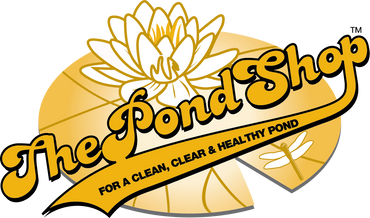Large-Leaf Pondweed

Largeleaf pondweed is a submersed aquatic plant native to New England and much of the United States. It is found in soft sediments where the water is quiet, in depths up to several feet. Largeleaf pondweed is a large, stately plant with two distinct leaf types. The submerged leaves are broad up to 2.5 inches wide, almost translucent and gracefully arched with the outer margins folding toward one another at the midvein. The floating leaves are smaller up to 2 inches wide, more oval shaped, not translucent and grow in opposite pairs at the top of the plant. The leaves are attached to the stems by leaf stalks. These stalks of the floating leaves are up to 12 inches long. The flower spikes emerge from June to August from among the floating leaves and are followed by fruit. The fruit is oval to egg-shaped with a small beak along the outer rim. The large leaf pondweed shades, shelters and offers forage to fish. Its fruits are abundant and are a valuable food source for waterfowl. Despite its benefits, if unmanaged it can grow to nuisance population; interfering with recreational activities. An overabundance of large-leaf pondweed can reduce oxygen levels in the water, which can contribute to a fish kill in the late summer or winter.
Prevention
Large-leaf pondweed seeds or fragments are carried into a body of water by wind, birds, boat, trailers or fishermen. Even plant fragments less than an inch long can survive the transfer to another body of water as long as they do not completely dry out. Prevention should start by eliminating the sources. When using water facilities such as ponds, lakes, rivers, make sure all clothing, boats, trailers, and any related equipment are free of plant material prior to leaving. Preventing the introduction and spread of this pondweed is the easiest and cheapest way to control it.
Biological Control
Beneficial bacteria products and enzymes such as PZ900 feed on nutrients in the water making them unavailable for plant growth. Reducing nutrients can help prevent invasion.
Physical/Mechanical Control
Removing large leaf pondweed plants may allow less-desirable aquatic plants to move in. For small problem areas or to clear up swimming and fishing areas, raking and cutting using an Aquatic Weed Eradicator (A.W.E.) or a Lake Rake can help reduce stem densities. However, escaped fragments can drift elsewhere and develop into new plants. It is important to remember that clearing up plant remnants will avoid larger infestations and extra work later on. Physical removal in conjunction with chemical control will maximize success.
Dyes and colorants reduce aquatic plant growth by limiting sunlight penetration and reducing photosynthesis.
Aeration has also been used as a mechanical approach to hinder pondweed proliferation. The added oxygen will accelerate the decomposition process of nutrients that pondweeds need to live.
Chemical Control
When used carefully according to the label instruction, aquatic herbicides can be safe and effective management tools. The products that have been successful in treating large leaf pondweed individually or in combination are Reward and Weedtrine D, Aquathol K – liquid, Aquathol Super K – granular, Propeller, and Sonar AS and Sonar RTU. A nonionic surfactant Cygnet Plus should be mixed in solution with herbicides when plants are treated.
Reward is a fast-acting contact herbicide, highly effective in killing any part of the plant that comes into contact with.
Weedtrine D is a contact, non-volatile herbicide for use in controlling submersed and floating aquatics weeds. Weedtrine-D has rapid absorption and herbicide action.
Aquathol K (liquid) is a concentrated, highly soluble contact herbicide, effective against a broad range of aquatic plants.
Aquathol Super K (granular) this contact herbicide has been effective on pondweeds and can be mixed with copper compounds for additional efficiency.
Sonar A.S. is a long-acting systemic herbicide ideal for water bodies with minimal flow. Simply mix Sonar A.S. with water and spray throughout the surface of the water or pour in different spots around the pond. Sonar A.S. does not have water use restrictions.
Sonar RTU is a long-acting, systemic, easy to use herbicide. Sonar RTU does not require mixing, simply open the bottle and treat from the shoreline.
Propeller is a broad spectrum, fast acting contact algaecide/herbicide. It comes in a water dispersible granule that mixes with water to be sprayed or pour. Propeller should be applied to actively growing plants or algal blooms.
Cygnet Plus is a nonionic wetting agent, sticker, activator, and penetrant all in one. Cygnet Plus increases the effectiveness of herbicides uptake into the plant tissue.
